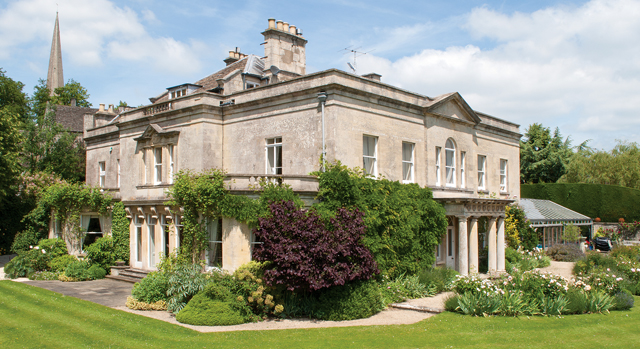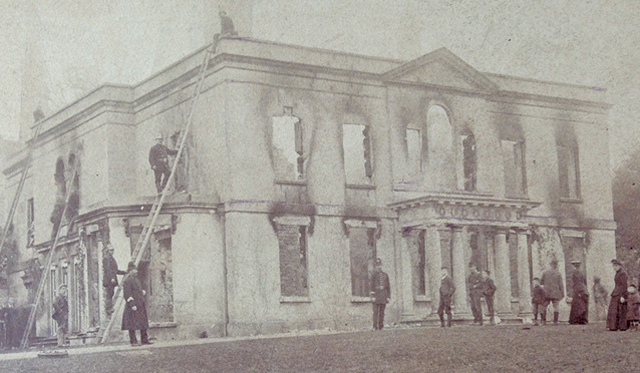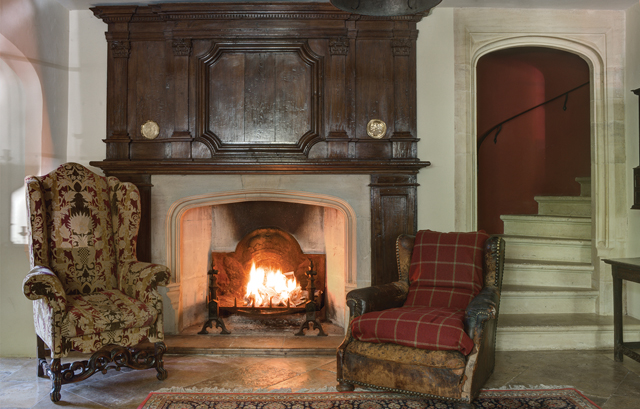An historic Cotswolds gem
The current owners have done an admirable amount of research into the fascinating history of this beautiful country house for sale in the Cotswolds


The response from buyers to the early-autumn launch of a very special Cotswold country house is likely to define the prospects of the struggling £2 million to £4 million sector of the market for the rest of the year—and possibly next year as well.
For sale through Savills (01285 627550) at a guide price of £2.75m, handsome Grade II-listed Castle Hale at Painswick, Gloucestershire, four miles from Stroud—described by the agents as ‘a hidden Georgian gem’ although its origins can be traced to Saxon times —ticks most of the boxes on every country buyer’s wishlist and several they probably haven’t yet thought of.
Few houses are as well-documented as Castle Hale, thanks largely to the Herculean research efforts of its present owners, Anthony and Sally Robinson, in retracing and verifying the chronology of the house, mostly as revealed in A Cotswold Manor Being the History of Painswick (1907) by the archaeologist and historian Welbore St Clair Baddeley, who lived at Castle Hale from 1897 until his death in 1941.
Their findings are backed up by a conversation recorded in July 1997 with Lady Cicely Nepean (see below), Baddeley’s great-niece and a frequent visitor to Castle Hale, which provides a fascinating insight into the life of the English gentry at that time. Castle Hale has been rebuilt at least three times, but is identified by Baddeley as the original manor house of Painswick and its name derives from castellum meaning ‘a fortified manor house’, and halle, the Old English for ‘corner of a meadow’.
An 1880s photo of Castle Hale in its setting on the edge of Painswick shows the house surrounded by 56 acres of orchards and meadows. According to Mr Robinson, that was the acreage that went with the house when it was bought for £2,000 by a local solicitor in the early 1950s.
The new owner must have been surprised when, one day, his wife announced proudly that she had sold the land, the outbuildings and the gatehouse for £2,000, which meant that they had got the house for nothing. Several hundred houses now occupy the land below the house, which, fortunately is protected by 1.3 acres of tranquil private gardens, with wide lawns, mature hedges and some magnificent historic trees creating a wonderful space to the south and west of the house, where the Robinsons have created a delightful water garden, fed by a natural spring.
The site of Castle Hale has been occupied for nearly 1,000 years, since the time of the Saxon Thane Ernsige, who owned the manors of Painswick, Cranham and Miserden. Painswick later passed to the Talbots, the last of whom, John Talbot, Earl of Shrewsbury, demolished the castle in about 1442 and divided the demesne into Castle Hale and its neighbour, Court Orchard. Little remains from this early period apart from an ancient well and the lower part of the ancient garden wall that divides the two houses.
Exquisite houses, the beauty of Nature, and how to get the most from your life, straight to your inbox.
There are also traces of a paved Norman courtyard, discovered by Baddeley some 2ft below present ground level. In the early 1600s, Castle Hale was owned by Sir Henry Winston, who lived there until his death in 1619 and whose arms can still be seen on one of the gables. His great-grandson was John Churchill, 1st Duke of Marlborough. In 1649, the house passed to William Rodgers, who further extended it; he is commemorated by a stone bearing the initials ‘W.R.1653’ on the landing of the main staircase.
In 1789, Castle Hale was bought by a wealthy Painswick clothier, William Bayliss, who demolished a large gabled block of the old house and replaced it with a new front in the Palladian style. In the early 1800s, the house was let to the vicar of Painswick, the Rev John Fearon, who, in 1804–5, planted the two great copper beeches to celebrate Nelson’s victory at Trafalgar. Bayliss’s daughter married the architect Charles Baker and, when her father died, the family went to live at Castle Hale.

Here, Baker made some significant changes, re-fronting the south-west elevation to match the Georgian additions and adding the portico with its four Tuscan columns. In 1894, a fire at Castle Hale gutted the front part of the house—a remarkable photograph taken the following morning shows firemen swarming all over the building, the windows now just hollow voids and the roof gone.
‘The house was heated by open fires and paraffin stoves in those days and the threat of fire was ever-present,’ Mr Robinson explains, adding: ‘In a sense, it is only now, more than a century later, that the house has fully recovered from that disastrous night.’ Basic reconstruction had taken place by the time Baddeley bought Castle Hale in 1897 and, during his long tenure, he carried out extensive renovations, which included the replacement of the roof and the repair of much of the stonework. His widow, Helen, lived on at the house until her death in 1952.
Their son Edmund was killed in a flying accident in 1931 and was possibly the last child to be born at the house before the Robinson’s own son, Benjamin, was born there in 1994. That was the year that the couple bought Castle Hale, which, by then, had been converted into seven bedsits.
They immediately embarked on a programme of renovations lasting 20 years, during which they have restored every room in the house, removing ‘stud partitions and other modern aberrations’ to reveal the original, beautifully proportioned rooms. Thanks to the help of the many highly skilled local craftsmen who have guided them over the years, Castle Hale is once again a major family home, says Mr Robinson with quiet satisfaction.

‘We have loved living here with our four children and it’s hard to leave, but they are grown-up now and we must move on. Our most satisfying achievements here have been the creation of a spiral stone staircase within an existing interior wall to replace an ugly institutional staircase, fitting large antique bookcases into the panelling in the study, finding and fitting three important period fireplaces and surrounds and discovering the location of a hidden priest-hole. Along the way, the search for original period baths, basins, taps, loos, flagstones and floorboards has been challenging, but tremendous fun,’ he concludes.
With regret, the Robinson family will leave behind a revitalised Castle Hale, with 9,000sq ft of accommodation on three floors, including four reception rooms, a conservatory with a heated swimming pool, a snooker room, a kitchen/ breakfast room, six bedrooms, five bathrooms and, on the second floor, an office, a studio and a self-contained granny flat. Staying with the house, and passing from one owner to the next, are framed portraits of William Bayliss, Charles Baker and Welbore St Clair Baddeley, along with Baddeley’s typed and handwritten notes.
Lady Cicely remembers ‘One of the aunts married and lived in Hyde Park Street and, as children, we used to go to lunch there. Sometimes, we were sent in the carriage to see the zoo. I can smell it now, black leather with the horse in front, and the name of the coachman was Squirrell. In those early days, there was a taxi rank at Marble Arch and also a cab rank for horses and carriages. One day, my mother was going that way and saw Squirrell with her coach on the cab rank. He was obviously doing a sideline and there was hell to pay on that discovery!'
